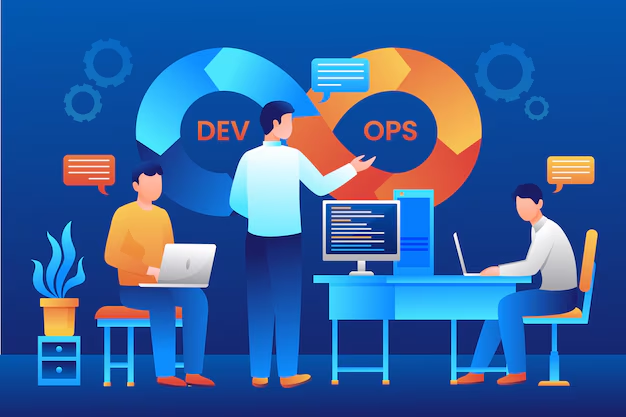Simplifying DevOps Through My Own Experience
 Jay Jethawa
Jay Jethawa
🔍 What is DevOps?
- It is a philosophy of combining Dev (Development) and ops (Operation) team at culture, practice and tools level.
🌟 Why DevOps?
Speed: DevOps practices allow for SDLC process, which means you can deliver the fixes, features and updates more rapidly.
Rapid Delivery: The quicker you can release new features and fix bugs, the faster you can respond to customer needs.
Higher Quality and Reliability: Continuous integration and continuous delivery (CI/CD) ensure that software is built, tested and released with high quality.
🧪 Automated Testing: Ensures consistent and thorough testing.🔧 Monitoring and Logging: Continuous monitoring and logging improve system reliability.
Scale: Automation and consistency help to manage complex or changing systems efficiently and with reduced risk.
🔹 Key Principles of DevOps (Benefits)
Collaboration and Communication:
Promote teamwork between Development and Operations, encouraging shared responsibility, transparency and open communication.
🤝 Teamwork: Bridges the gap between development and operations teams.📢 Communication: Enhances communication and transparency.
Automation:
Automate the repetitive tasks to reduce errors and save time.
Tools like Jenkins, GitLab CI/CD and Ansible are popular for automation.
Continuous Integration and Continuous Deployment (CI/CD):
Continuous Integration: It is a DevOps software development practices where developers frequently merge code changes into a central repository.
🔄 Automated Testing: Code changes are automatically tested.📦 Frequent Code Integration: Developers integrate code into a shared repository frequently.Continuous Deployment: It is a DevOps software development practices where automate the deployment of code to production.
🚀 Automated Deployment: Code is automatically deployed to a production-like environment.✅ Release Readiness: Ensures that the software can be released at any time.
Infrastructure as Code (IaC):
Manage and provision computing infrastructure through machine-readable configuration files, rather than physical hardware configuration or interactive configuration tools.
Tools: Terraform, AWS CloudFormation.
💻 Scripted Infrastructure: Infrastructure is managed and provisioned through code.🛠️ Version Control: Infrastructure configurations are versioned and tracked.
Monitoring and Logging:
Continuously monitor applications and infrastructure to identify issues.
Tools: Prometheus, Grafana, ELK Stack.
Monitoring and Logging:
Integrate security practices into the DevOps process (DevSecOps).
Regular security testing and vulnerability assessments.
/🔹 DevOps Tools
Version Control Systems:
🗃️ Git: A distributed version control system.
Continuous Integration/Continuous Delivery (CI/CD):
🔧 Jenkins: An open-source automation server.🚀 Travis CI: A continuous integration service.
Configuration Management:
🛠️ Ansible: Automation for configuration management, application deployment, and task automation.📜 Chef: Infrastructure as code tool for managing and configuring servers.
Containerization:
🐳 Docker: Platform for developing, shipping, and running applications in containers.☸️ Kubernetes: System for automating deployment, scaling, and management of containerized applications.
Terraform for infrastructure as code
🔹 DevOps Practices
Automated Testing:
🔄 Continuous Testing: Integrate testing into the development process.🧪 Unit Tests: Small tests that verify individual components.
Continuous Monitoring:
📊 Performance Monitoring: Keep track of application performance.🕵️ Security Monitoring: Monitor for security threats and vulnerabilities.
Collaboration and Communication:
🗣️ Daily Stand-ups: Regular meetings to discuss progress and roadblocks.📈 Retrospectives: Regular reviews to reflect on successes and areas for improvement.
🌐 Conclusion
DevOps represents the traditional software development lifecycle (SDLC), enhancing speed, collaboration and quality. By implementing DevOps practices and tools, organizations can achieve continuous delivery and reliable software deployment.
Subscribe to my newsletter
Read articles from Jay Jethawa directly inside your inbox. Subscribe to the newsletter, and don't miss out.
Written by
